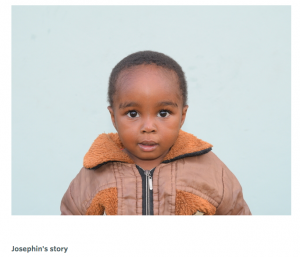
Watsi, a nonprofit located in San Francisco, has a bold mission: to provide healthcare for every person in the world.
A nonprofit healthcare crowdsourcing platform, Watsi enables individual donors to directly fund medical care for individuals in developing countries without access to affordable medical care.
From Wiki:
Watsi’s medical partners included Nyaya Health, Dr. Rick Hodes, Wuqu’ Kawoq, Children’s Surgical Centre, CURE International, African Mission Healthcare Foundation, Hope for West Africa, Project Muso, Lwala Community Alliance, Living Hope Haiti, Floating Doctors, Burma Border Projects, Partner for Surgery, International Care Ministries, The Kellermann Foundation, and World Altering Medicine.
In 2016, Wasti partnered with Patientco, a healthcare payment technology company, to fund medical procedures throughout the world.[8]
The medical partner identifies a patient that needs low-cost, high-impact medical care and submits the profile to Watsi. If the profile meets the criteria, Watsi accepts it and guarantees the medical partner that they will cover the cost of providing care to that patient. Watsi posts the profile online, donors browse the profile and fund it, and the medical partner provides care to the patient once the patient reaches his or her funding goal.
After the treatment is provided, the medical partner sends Watsi an update about the outcome of the treatment. After receiving the update, Watsi sends it to the donors who supported that patient and transfer the funds via PayPal to the medical partner’s bank account to cover the cost of the treatment.[9]
Watsi’s success ties directly to their storytelling. Click on the Support a Patient link on their site and you’ll see stories of current patients seeking funding. Like Biboy, a “one-year-old boy from the  Philippines who loves to play with toy trucks. Biboy is a thin child who has been diagnosed with malnutrition.” Or Josephin is a two-year-old girl from western Tanzania. Every story features a timeline and shows how many donors are funding the patient.
Philippines who loves to play with toy trucks. Biboy is a thin child who has been diagnosed with malnutrition.” Or Josephin is a two-year-old girl from western Tanzania. Every story features a timeline and shows how many donors are funding the patient.
Watsi’s model is brilliant in its simplicity and transparency. And that extends to their annual report. Chase Adam recently sent out this email:
This year, we’re doing something different. Instead of using our annual report to share 2016’s shiniest numbers, we’re using it to share the most problematic ones — for example, the $54,242 in fraudulent donations we had to refund.
Check out our radically transparent annual report, and this holiday support our, not always shiny, but perpetually transparent journey toward making healthcare possible for everyone by giving to patients on Watsi.
Chase
Watsi writes:
We’re sharing these numbers because, if we’re being transparent, our progress toward making healthcare possible for everyone doesn’t come from glamorous strokes of inspiration or bulletproof plans for success.
Our progress comes from problems that push us forward.
Check out Watsi’s radically transparent storytelling with numbers in their 2016 Annual Report.

















 I can’t wait to meet with you personally.
I can’t wait to meet with you personally.
Comments on this entry are closed.